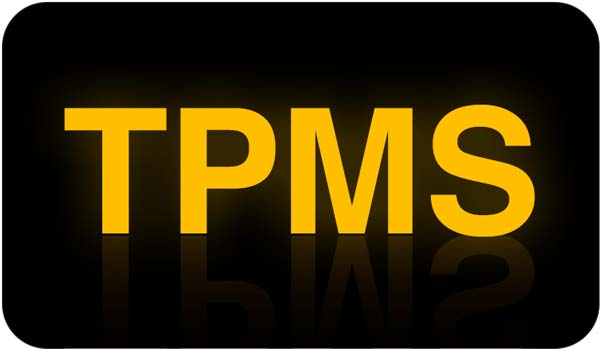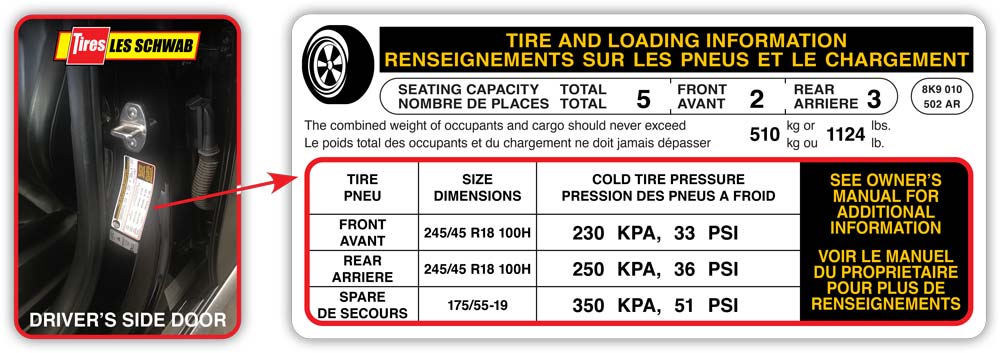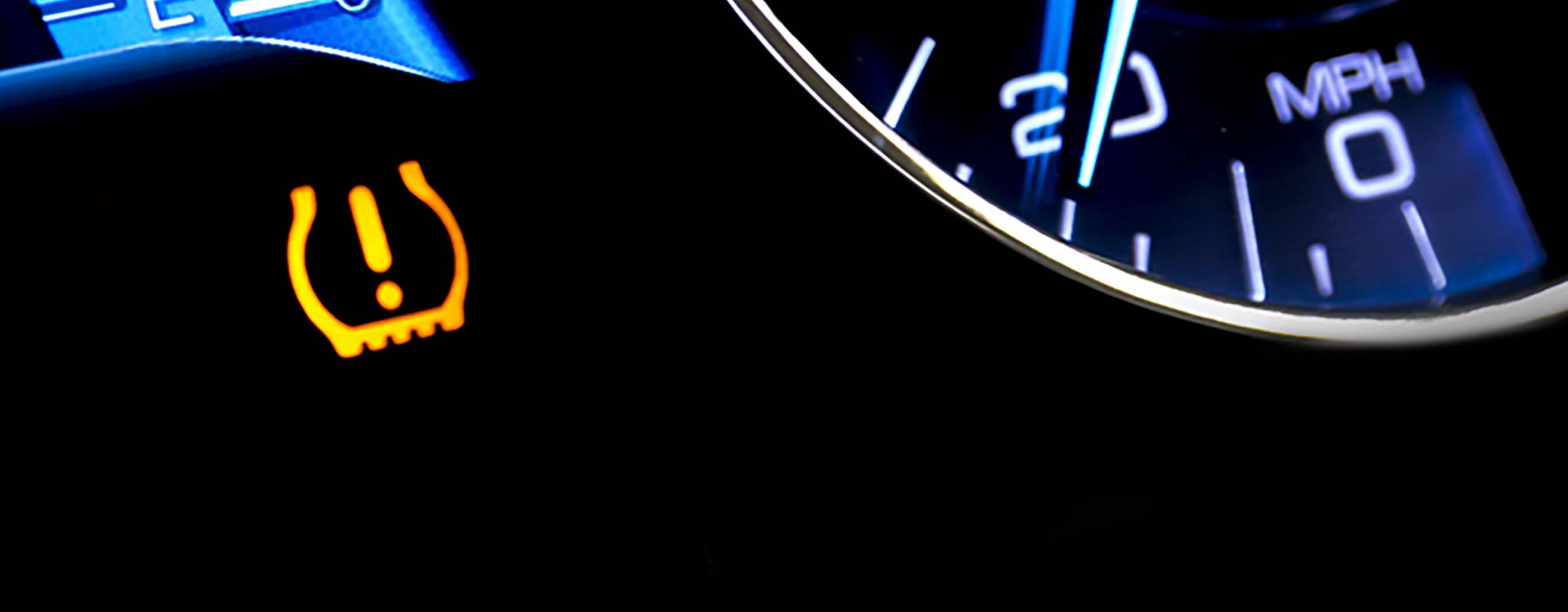TPMS Light Coming on in Cold Weather? Here’s Why
Every year, the first cold days play havoc with TPMS (tire pressure monitoring systems). If your dashboard TPMS light has ever lit up on a colder-than-normal day, chances are there may be nothing wrong with your tires or wheels. It could be that the air pressure in your tires has been affected by the cold. While you’re always welcome to stop by Les Schwab to have your tire pressure checked anytime you see the TPMS indicator, here’s why your low-pressure tire light comes on and what to do when it happens to you.
How Does Cold Weather Affect My Tire Pressure?
Tire pressure can decrease about 1 PSI (pounds per square inch) for every 10 degrees the temperature drops. It’s not due to air escaping, but rather the air inside the tire condensing. Once it does that, it takes up less space inside the tire. When a tire drops below the recommended fill pressure, the TPMS light comes on. Thankfully, that pressure change is usually temporary. Driving will often heat up the tire and the air inside, increasing the tire’s pressure.
Please Note: Tires routinely lose 1 PSI per month as air escapes around the edge of the rim and through the tread itself. This is completely normal, which is why you should have your tire pressure checked and topped off every month at Les Schwab.
If the TPMS light does not go off after the tires have heated up, bring your tires up to the proper pressure or have your air pressure checked at Les Schwab. If it still does not turn off, you may need to reset the TPMS light.
What Is a TPMS Light?
The tire pressure light (or low-pressure indicator) is just one part of the TPMS system. Some vehicles have two dash indicators.
Low Pressure Indicator
The low-pressure indicator looks like an exclamation point in the middle of an open-top, flat tire. This lights up when the pressure in one or more of your tires falls below the recommended fill pressure.

TPMS System Indicator
The TPMS light, available in some vehicles, may light up indicating an issue with the tire pressure monitoring system, such as a dead battery in one of the tire-pressure sensors. If your vehicle does not have a TPMS light, the low-pressure icon might flash, which could indicate an issue with the system.
No matter what causes your tire pressure light to turn on, stop by any Les Schwab. We’ll add air to your tires and check out your system.
Winter Tire Pressure
Winter temperatures can affect the pressure in your tires by up to 10 PSI. Depending on how cold it is, the TPMS light will likely shut off on its own as the air in your tires warms, expands, and reaches proper inflation levels.
Regardless, get your air checked right away. The TPMS light means your tires are below the proper air pressure. This is a safety risk, especially in the winter as the drop in air pressure can cause compromised handling and increased wear and tear on your tires. Your gas mileage could also be affected.
Can You Drive With a Low Tire Pressure Light?
Driving too long with the TPMS light on (and low air pressure) could affect your safety, including handling and braking. It can also decrease fuel efficiency, damage your tire sidewalls, and cause uneven tread wear. If the TPMS light does not go off after you have added air, get to Les Schwab immediately or change to your spare (if you know which tire is low) and stop by as soon as possible.
Does Air Pressure Impact Tire Life and Fuel Efficiency?
Maintaining proper air pressure can extend tire life by promoting even tread wear. Plus, correct air pressure can improve fuel efficiency by up to 3.3 percent, adding up to more miles per gallon.
One More Reason Your TPMS Light May Turn On
Your TPMS light may flash if your vehicle’s onboard computer can’t detect the sensor, whether it has been damaged or you are using your spare tire. While many vehicle spares do have a sensor, some do not.
How Do I Check My Tire Pressure?
During colder months, we recommend you have your tire pressure checked once a month. Throughout warmer months, you might not need to check your tires as frequently. You can check your tire pressure by following the steps below or by watching our video.
How to Add Air to Your Tires
Learn how to add air to your tires.
1. Find Your Recommended Tire Pressure:
Look in your owner’s manual or for a special sticker on the inside driver’s side door for the standard cold tire inflation pressure. This number is the suggested PSI for your tires, as suggested by the vehicle manufacturer.
Please Note: If you suspect a tire or wheel on your vehicle may be damaged, change to a spare and head to Les Schwab. We will inspect it for free.

2. Check Your Tire Pressure:
Verify the pressure in each tire in the morning or when the tires are cold. This will give you an accurate reading. To check the pressure in each tire, use a tire pressure gauge. These often look like a metallic pencil with a sliding measuring device on one end and a tire valve connection on the other.

3. Park Your Car in a Convenient Location:
Whether you’re at a gas station or home, be sure you can safely reach all four tires with the air hose.
4. Remove the Tire Valve Cap:
Put the cap in your pocket so you don’t lose it.5. Place the Compressor Fitting Firmly on the Tire Valve Stem:
Begin to inflate your tire. You’ll hear air going into the tire. If you hear or feel air coming out, readjust the connection between the air nozzle and the value stem.
6. Add Air for a Few Seconds:
Keep in mind that not all air compressors inflate at the same rate. You’ll want to check your tire pressure often as you inflate. Add air as needed. To remove air, quickly push in the center pin located inside the tire valve.
7. Replace the Valve Cap:
This helps keep more air in your tires for a longer period of time and can keep road debris (dirt and more) from getting into the valve.
Les Schwab Understands Air Pressure
If you need help with the air pressure in your tires, find a Les Schwab store near you. Our knowledgeable technicians will perform a free visual inspection, inflate your tires to the recommended pressure, and get you safely back on the road.
